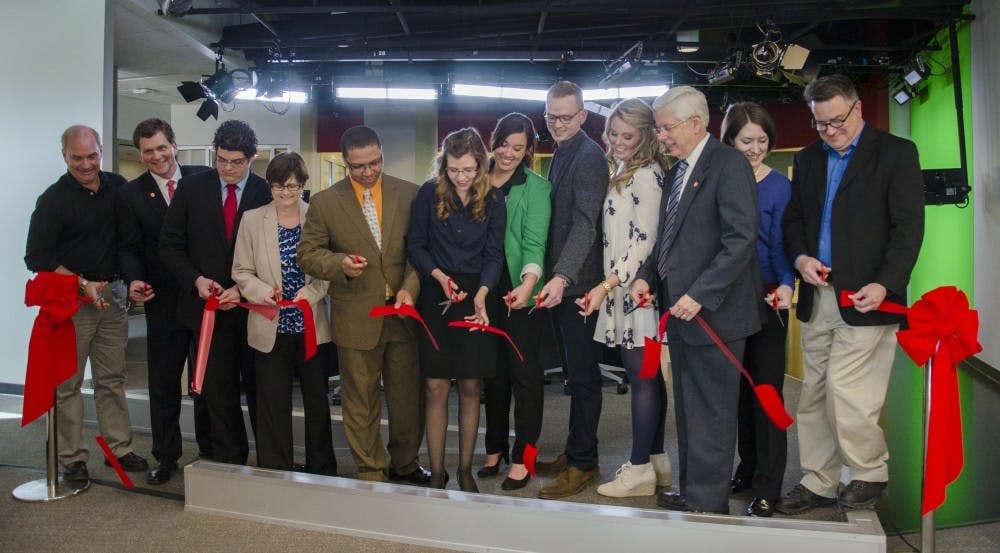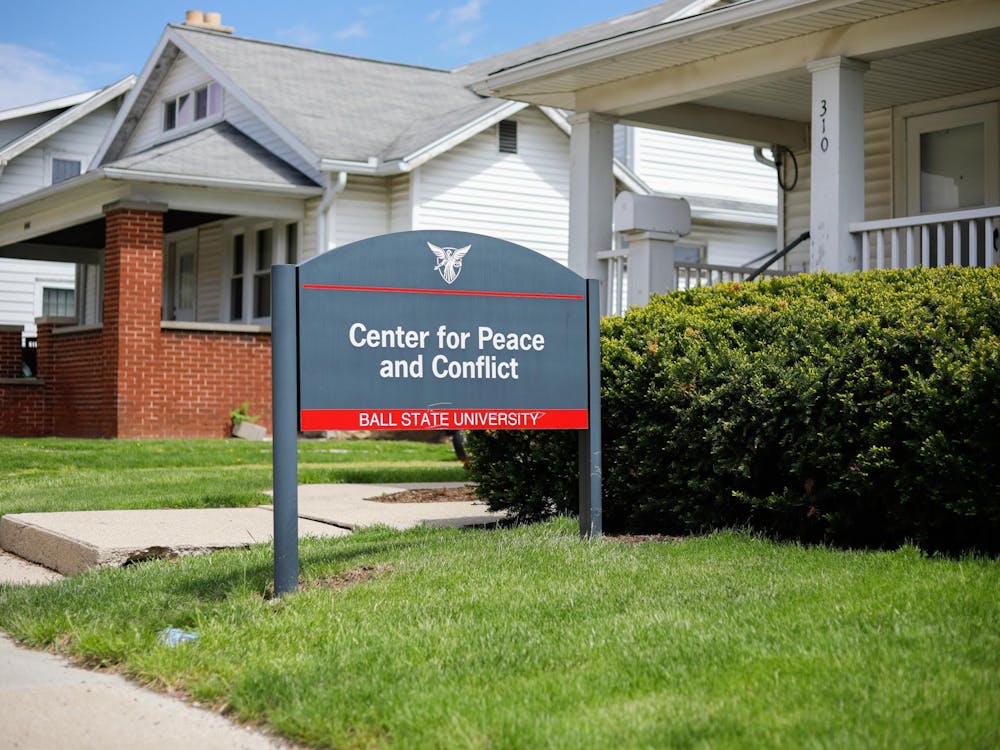Editor's note: In honor of the university's centennial year, The Daily News is counting down 100 days to the university's celebration Sept. 6 with 100 of Ball State's most famous traditions and figures. Check back each day to read about Cardinal history.
The College of Communication, Information, and Media (CCIM) was founded in 1996, bringing together a wide range of topics under one college.
The college’s first dean, Earl Conn, came to Ball State in 1958 and eventually became the journalism department chair in 1984.
“Nothing in the future is going to be more immediate or more necessary than news, information and technology,” Conn said about the college in the Oct. 18, 1997, issue of The Daily News. “The CCIM wants to be at the very center of what’s happening, and if that happens, then the future for us is without limits.”
Within its second year, CCIM was the fourth largest undergraduate communication college — behind the University of Florida, Michigan State University and Pennsylvania University — and the ninth largest postgraduate communication college in the country, according to an article in the Jan. 13, 1998, issue of The Daily News.
Today, CCIM encompasses the Department of Communication Studies, Department of Journalism, Department of Telecommunications and Center for Information and Communication Studies.
CCIM’s mission is to create “challenging education experiences that prepare students for careers as ethical practitioners and scholars,” and redefine “the intersection of communication and technology while emphasizing the importance of human interaction,” according to Ball State’s website.
The Department of Communication Studies focuses on communication in the form of public speaking, popular culture, intercultural communication, activism, advocacy, nonverbal communication, political communication, rhetoric of marginalized voices and more.
What started as a small collection of courses grew into a department supporting eighteen full-time faculty members and student groups such as the speech team, debate team, Comm Club and Lambda Pi Eta honors society.
Within the Department of Journalism, a bachelor’s in journalism, journalism education, advertising and public relations is offered.
The department provides “classroom instruction paired with real-world learning and student media and agency opportunities” to help students “graduate with a command of industry trends and technology,” according to Ball State’s website.
Students in the Department of Telecommunications, or TCOM, are part of one of the largest academic departments on Ball State’s campus and have won honors such as academy awards and regional emmy awards.
High-definition digital cameras, digital audio recording, professional lighting kits, support gear and other technology are available to help train students in different elements of multimedia storytelling and there are a number of concentrations for students within the department including film and media studies, sales and promotion, digital production and news.
Graduate students also study within the college at the Center for Information and Communication Sciences (CICS) to earn a master’s degree in information and communication services.
CICS brings together “business, technology, law and digital policy and [applies] these competencies in many places, including business, government education and nonprofit organizations.” Ball States is the first university in the country to partner with Amazon Web Services (AWS) Academy, according to Ball State’s website.
While each department of CCIM focuses on a different facet of communication, students in the college come together to learn in collaborative spaces and multiple student media, agencies, associations and societies.
Read more centennial content here.
Contact Brooke Kemp with comments at bmkemp@bsu.edu or on Twitter@brookemkemp.





